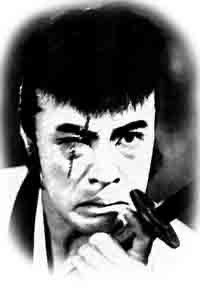I heard the rumor some months ago, but I finally came across some articles to make this official: Seo Mitsuyo, the pioneer Japanese animator who directed the first feature length Japanese animated films, died last year, on 24 August 2010. He was 99 years old. For some reason, the passing of such a historic figure has not been officially reported in the press or been the subject of (much deserving) obituaries. My confirmation has just been two articles that Ohara Atsushi published in the Asahi shinbun here and here. There is no news on the exact cause of death.
Seo was a fascinating figure. He first studied painting, but interested in animation, he got involved in the animation group in Prokino and was even arrested for his activities. It is thus ironic that a leftist ended up making some of Japan's most infamous wartime animated propaganda films, and Seo was apparently long ashamed of that part of his career. But we should not forget that he was an innovator, a figure who, along with Masaoka Kenzo, with whom he sometimes worked, laid the foundation for the Japanese animation world we know today. He was the first to introduce the multiplane camera to Japan in Ari-chan in 1941 and then directed Momotaro no umiwashi in 1942, which even at 37 minutes was billed as Japan's first feature-length animated film. (My wife has released that film on DVD with English subtitles as part of the Roots of Japanese Anime collection.)
His masterpiece, though, was the truly feature length Momotaro: Umi no shinpei (1944), a brilliant work of animation, even if it is a celebration of Japanese colonialism and military aggression. It is a virtual treatise on animation technique, ranging from the cartoonish to the realistic, from the exploration of depth to the stressing of surface (in the famous kage'e sequence Masaoka was in charge of). The famous story is that Tezuka Osamu, later known as the father of modern Japanese manga, saw this film as a teenager and declared he wanted to become an animator (which he eventually would become, as he made works ranging from the groundbreaking TV anime Astro Boy to the experimental film Jumping).
The Japanese animation industry was in disarray after WWII, especially with the loss of government support (Seo's two Momotaro films were sponsored by the military) and the return of Disney to Japanese screens (it would take Toei, the most profitable studio in the 1950s, to put together the capital to fund quality animation on an industrial scale over a decade later). Seo and Masaoka and many others left the industry, Seo becoming an illustrator of children's books using the name Seo Taro. I always wonder, however, whether another reason he quit animation was guilt over his wartime work. That may have been another reason the family did not publicize his death.
Seo, however, deserves to be talked about: he was that important. There has been some research on Seo's wartime films, include for instance Ueno Toshiya's excellent analysis of Umi no shinpei, but no real studies of Seo himself, except the dojinshi Cinematheque, which did a special issue on him a couple of years ago (an announcement can be found on this blog entry).
I hope we can see more work on him in the future.

